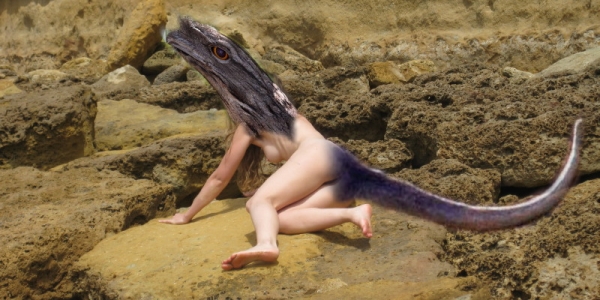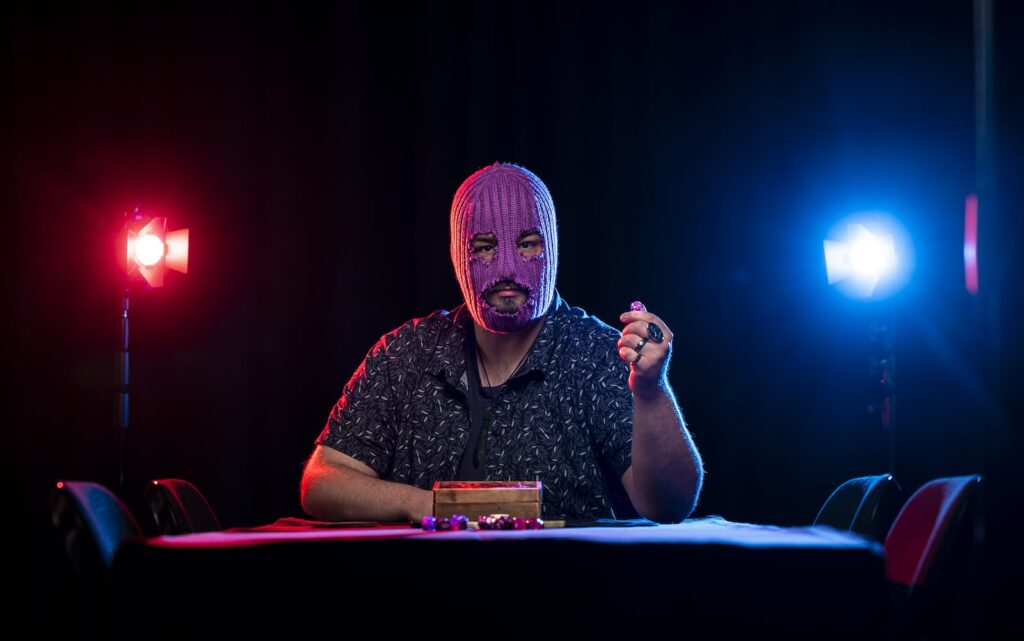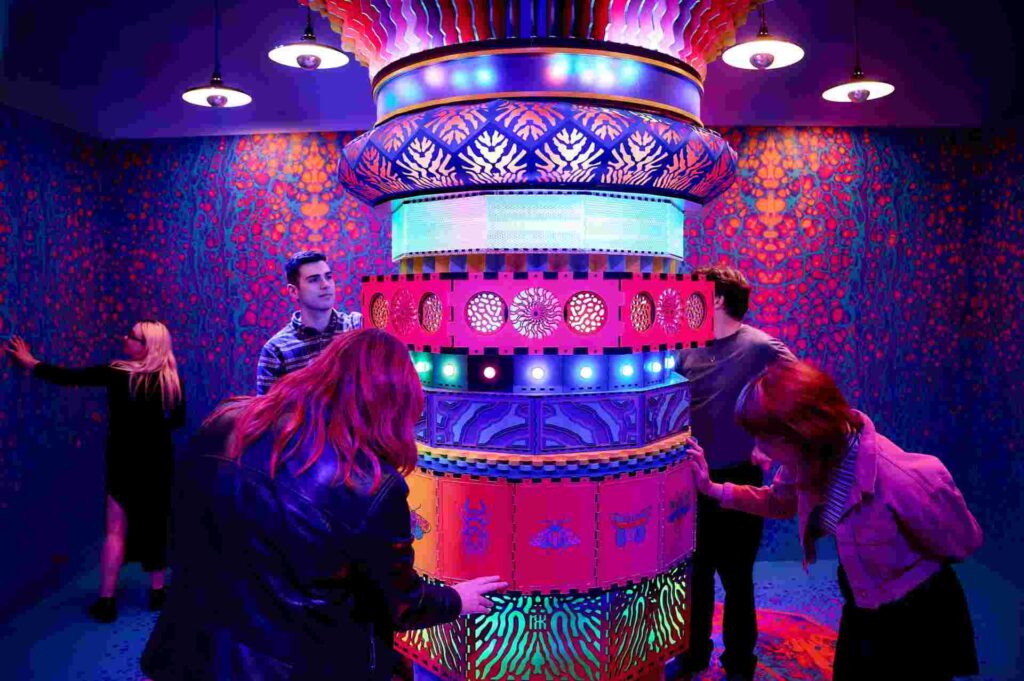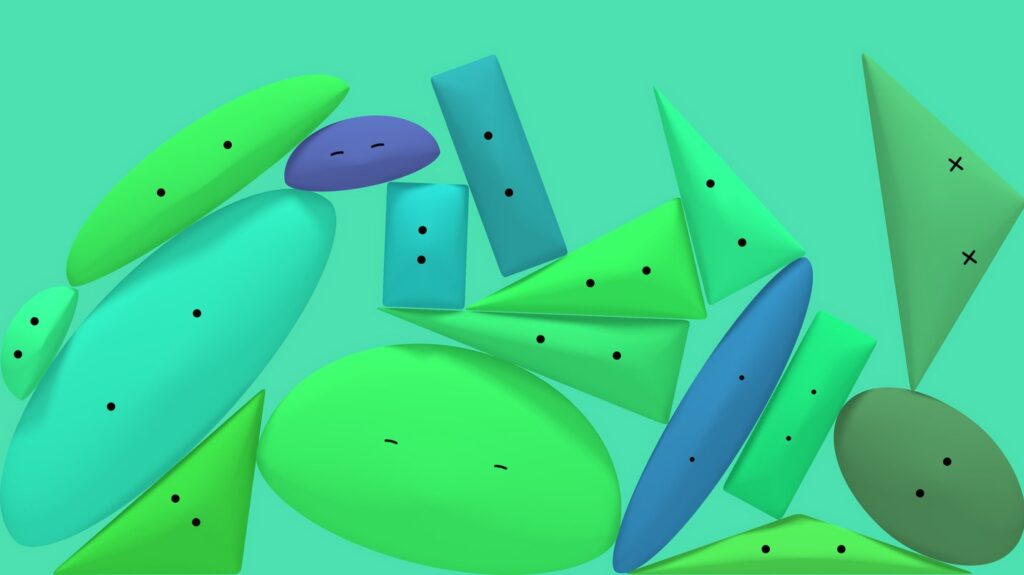Having received a mass of praise (and a small smattering of criticism) thus far, Monster Body leaves a profound impressive on the audience, regardless of taste.
With the performance over six months old on stage, Eke discusses the transformations that have occurred over that time. “I guess it does transform in a sense,” Eke says with her humble and unassuming tone. “I’ve performed it in a few different contexts and it can be performed as a solo show and with other performers. I’ve performed it at various festivals so the space within which it’s performed can be very different. At MONA FOMA, I performed it in a huge underground space on a very small stage to a crowd that had been boozing on all day at a music festival. They were very rowdy but also very responsive to the work. It’s very different to perform it in a theatre where everyone is well behaved.”
Overall, the response to the piece has been positive and even those who have criticised it have still been moved by what they experienced. Monster Body isn’t Swan Lake; it isn’t a pretentious two hours of pomp and ceremony but rather a gutsy and raw story where substance takes precedence over style. “I’m just not all that interested in virtuosity or spectacle,” she says honestly. “I think audiences are really used to being given that in relation to dance. They look at it as a form of entertainment and not as an art form dealing with the body to say something about the world. I make it a point to use that as an aesthetical preference; I’m not being in any way virtuosic and I’m challenging the relationship of the spectator. People are used to being in the darkness watching something that they supposedly can’t do and I don’t agree with that relationship. Or they’re sitting there in the darkness, objectifying the body on stage, there’s an imbalance of power there. The lights are on in Monster Body, I’m not trying to create a complicated relationship with the people I’m in a space with.”
This is where those audience members who are critical of the piece – usually industry-based – come unstuck with their experience of this work. Monster Body is explicit in its honesty, using a myriad of tones, textures, and moods, to subvert the status quo of body perceptions. Dark and light reign supreme, as the grotesque sits in parallel with the beautiful – even moments of comedy finds their way into Eke’s story. Any criticism seems to fail to understand that Eke is primarily concerned with using the body to comment on society – the political and the personal – as opposed to blatantly showing the extremes of the body’s capabilities.
Eke responds with grace and humility to the discussion of dance criticism. “I think, in terms of critical writing about dance, there’s a long way to come from where we are,” she says. “For me, I look at the context within which the criticism is written, I look at the writer, and I realise that it’s their process. If someone from a commercial dance company comes to see this, they’re not going to get what they expect. I enjoy hearing people’s thoughts, whether they’re a qualified critic or just an audience member, and I’m not one to be worried or disappointed by it.”
Overwhelmingly, the response to this show is focused on the sexual objectification of the female body. Whether that is simply because Eke is a young female or society is simply programmed that way is hard to guess, but it is interesting that for Eke, the piece has always been about the objectification of the body in general terms, without there ever being a sexual focus. Even within dance as a whole, Eke looks at physical objectification as being far beyond the sexual.
“No I don’t think the body is necessarily sexualised in dance, but it is objectified beyond that whether the performer is male or female,” she says. “On my behalf, this piece isn’t exploring sexuality on my behalf – it’s actually been described as asexual – but I think it’s commenting on how the image of the body can be exploited in the world generally and how it’s used to sell things. I didn’t go into this assuming the audience would have any particular expectations or make any particular judgements.”
So how long will Monster Body stay alive? “I think, the fact that it can transform as it goes, means that I can perform it for many, many, many years,” she says. “I think the problem with making a performance that becomes a product that can be circulated on the market is that it becomes inherent to the time it has been made. I don’t know what it is to produce a product and just repeat that; I think that where I’m at in how the piece will manifest. It could go for a lifetime.”
BY KRISSI WEISS







